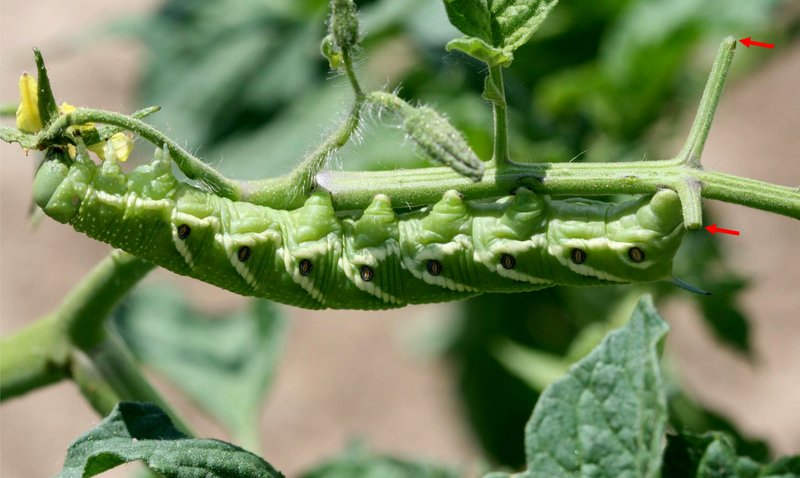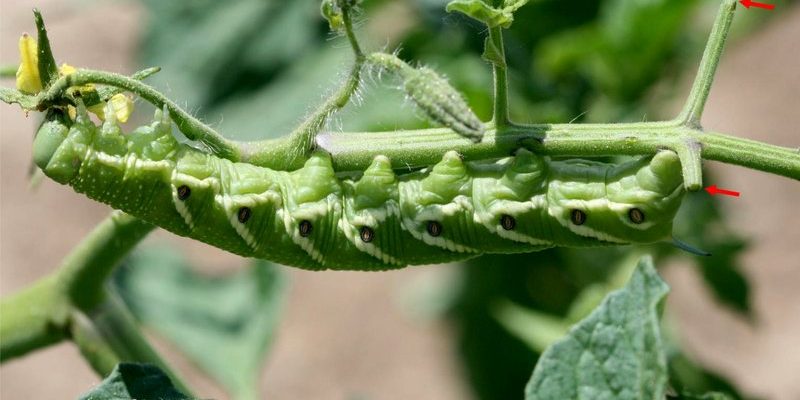
Let’s break down what hornworms are and how crop rotation can be a game-changer for your garden. By understanding the relationship between these two, you can create a healthier environment for your gardens to thrive. Imagine sitting down with a friend and discussing how to outsmart these little pests—let’s dive into the conversation!
What Are Hornworms?
Hornworms are the larvae of certain species of moths, primarily the tobacco hornworm and the tomato hornworm. They can grow quite large, up to 4 inches long, and they’re usually a bright green, which makes them blend in well with tomato leaves. These little creatures have a bit of a reputation—they can strip a plant of its leaves in just a few days. Honestly, it’s like having an unexpected house guest who eats everything in your fridge!
You might be wondering how to identify these pests. Here are a few telltale signs:
- Color and Size: As mentioned, they’re typically large and green, making them hard to spot against the leaves.
- Frass: If you find small black droppings on the leaves or the ground beneath your plants, that’s a sign that hornworms are nearby.
- Leaf Damage: Look for missing leaves or chewed sections of your plants.
Spotting hornworms early can save your crops from significant damage. If you’ve seen signs of these pests, now’s the time to take action!
Understanding Crop Rotation
Crop rotation isn’t just for professional farmers; it’s beneficial for home gardeners too. The concept is pretty straightforward: it involves changing the location of your plants each season. Think of it as planning a family road trip—each member (or plant) gets a chance to explore a different route rather than traveling the same one over and over.
So why does this matter? When you grow the same crops in the same spots year after year, pests and diseases can build up in the soil. By rotating crops, you disrupt their life cycle. For example, if you plant tomatoes in one area this year and then follow that with a different type of vegetable next year, you’re reducing the likelihood of hornworms returning in full force.
There are several benefits to crop rotation:
- Soil Health: Different plants contribute to and deplete different nutrients in the soil. Rotating helps maintain a balanced nutrient profile.
- Pest Management: As we’ve mentioned, it confuses pests that have become accustomed to a particular food source.
- Disease Prevention: By changing the plants, you can reduce the chances of soil-borne diseases affecting your garden.
Putting a little thought into your crop rotation plan could pay off big time!
How Crop Rotation Works Against Hornworms
Now, let’s get into the nitty-gritty of how crop rotation specifically helps manage the hornworm issue. First off, consider that hornworms thrive on specific plants, primarily tomatoes and peppers. When you rotate out these crops for a season, you’re denying the hornworms their favorite buffet.
In essence, by planting crops that hornworms don’t prefer, you’re creating an unfriendly environment for them. A great rotation plan might look like this:
- Year 1: Plant tomatoes.
- Year 2: Switch to beans or carrots.
- Year 3: Plant leafy greens like spinach or lettuce.
This strategy not only disrupts the hornworm population but also allows your soil to recuperate and regenerate.
Best Practices for Crop Rotation
If you’re ready to dive into crop rotation, it helps to have a plan. Here are some best practices to keep your garden thriving:
- Keep Records: Jot down where you plant each vegetable each year. This helps avoid repeating the same plants in the same spot.
- Group Plants: Group crops with similar watering and soil needs together. For example, beans fix nitrogen in the soil, which can benefit your future crops.
- Choose Diverse Crops: The more variety, the better! Experiment with different plants to keep your garden interesting and resilient.
You might find that certain crops perform better in your unique garden environment. Adjust your rotation accordingly!
Challenges of Implementing Crop Rotation
While crop rotation sounds great, it does come with its challenges. It often requires a bit more planning and organization. Not all crops can be rotated easily, especially if you have limited space.
For example, if you love tomatoes but live in a smaller garden, you might be tempted to plant them in the same spot every year. But that’s where the balancing act comes in. To combat this, here are a couple of strategies:
- Use Containers: If you have limited ground space, consider container gardening. It allows you to easily move plants around.
- Companion Planting: Pair certain crops together to deter pests. For instance, planting basil alongside tomatoes can help keep hornworms at bay.
Being flexible in your approach can lead to some exciting gardening experiences!
In the never-ending battle between gardeners and pests like hornworms, **crop rotation** is a secret weapon. By switching up where you grow your plants, you can significantly reduce the chances of these critters munching away at your garden. Plus, you’ll be improving your soil health and increasing biodiversity.
Remember, gardening is as much about learning from experiences as it is about nurturing your plants. So grab that notepad, plan out your crop rotation, and watch your garden flourish. Here’s to happy planting and fewer hornworms!

